Share your results
Please enter your email
Results shared!
We've sent a link to your email so you can access your results at any time.
You can reduce your risk of falls, and you can do it on a budget. Here are 10 simple balance exercises for you to try at home for free.

Fear of falling leads many older people to move around less. But this leads to further loss of balance and strength, making falls more likely.
Luckily, you can improve your balance and reduce your risk of falls. Doing so can support your independence and quality of life, too.
All you have to do is move! Keep moving however you can for as long as you can. The more you move, the better your balance will be.
Whatever fitness level you are, it's never too late to start. You can work your fitness goals up from performing everyday activities to following a balance-focussed exercise routine.
Fear of falling leads many older people to move around less. But this leads to further loss of balance and strength, making falls more likely.
Luckily, you can improve your balance and reduce your risk of falls. Doing so can support your independence and quality of life, too.
All you have to do is move! Keep moving however you can for as long as you can. The more you move, the better your balance will be.
Whatever fitness level you are, it's never too late to start. You can work your fitness goals up from performing everyday activities to following a balance-focussed exercise routine.
Read less...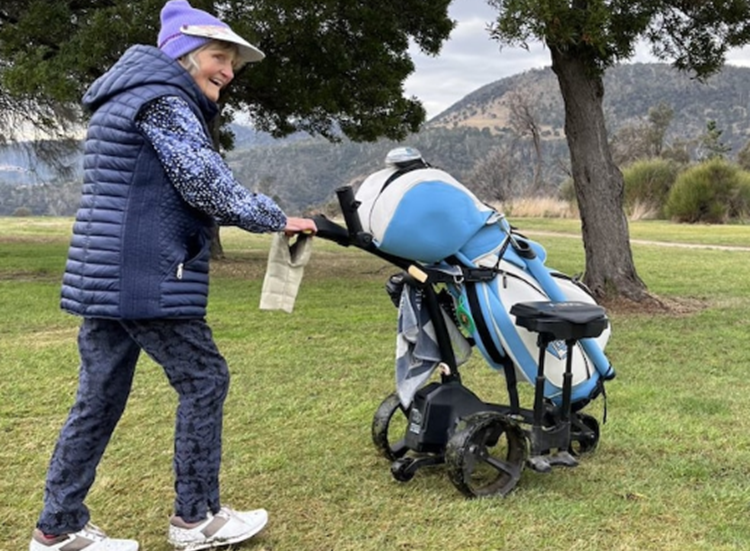
It’s best to plan your exercise routine with a physiotherapist, exercise physiologist, or occupational therapist. They can tailor it to your goals and abilities.
However, there are many low-risk things you can do for yourself to take charge of your fitness.
Are you looking for low-cost, low-impact ways to improve your balance and avoid falling? Check out these 10 exercises for falls prevention that you can try at home. No fancy gym equipment required.
It’s best to plan your exercise routine with a physiotherapist, exercise physiologist, or occupational therapist. They can tailor it to your goals and abilities.
However, there are many low-risk things you can do for yourself to take charge of your fitness.
Are you looking for low-cost, low-impact ways to improve your balance and avoid falling? Check out these 10 exercises for falls prevention that you can try at home. No fancy gym equipment required.
Read less...Before you begin, remember to listen to your body. Exercises should not feel painful.
Stop and seek advice from a medical professional if you feel any new or increasing pain or if you feel dizzy, clammy, or short of breath. Some of these exercises may not be for you. Consult a medical professional if you are unsure.
And consider keeping a friend nearby when trying these exercises.
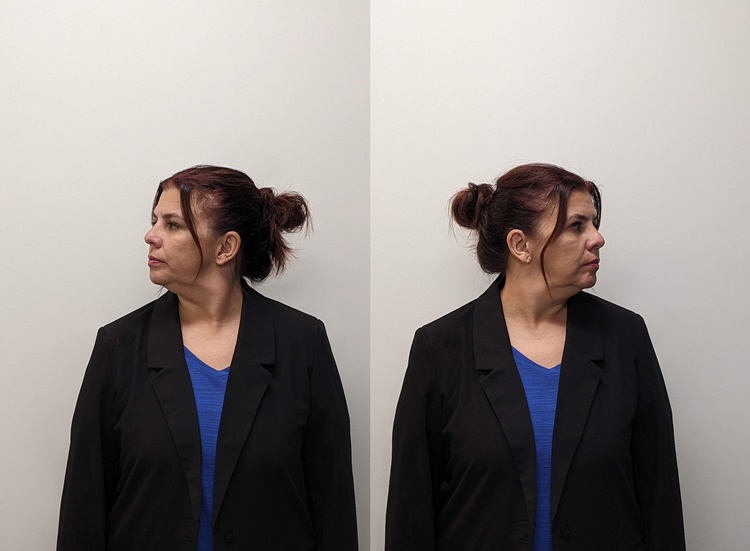
One factor in good balance control is maximising your line of sight. Aside from keeping on top of your eye health, this also means maximising mobility in your neck. The following exercises can also be found in the Otago Exercise Program booklet.
Side to side:
Stand tall and look ahead.
Slowly turn your head as far as you can to the left and then as far as you can to the right. Stay within pain-free range.
Repeat the exercise the same number of times for each side.
One factor in good balance control is maximising your line of sight. Aside from keeping on top of your eye health, this also means maximising mobility in your neck. The following exercises can also be found in the Otago Exercise Program booklet.
Side to side:
Stand tall and look ahead.
Slowly turn your head as far as you can to the left and then as far as you can to the right. Stay within pain-free range.
Repeat the exercise the same number of times for each side.
Read less...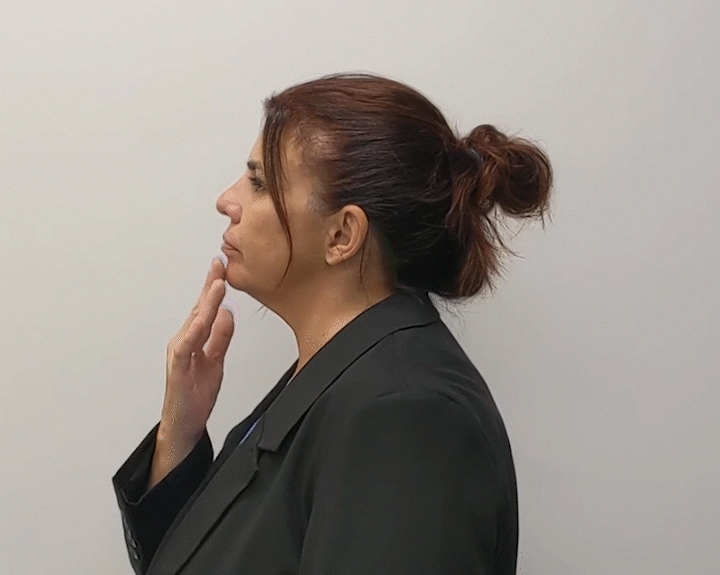
Back and forth:
Return your head to centre position.
Place one hand on your chin and use it to gently guide your head straight back.
Return it to starting position slowly and repeat the exercise a few times.
Back and forth:
Return your head to centre position.
Place one hand on your chin and use it to gently guide your head straight back.
Return it to starting position slowly and repeat the exercise a few times.
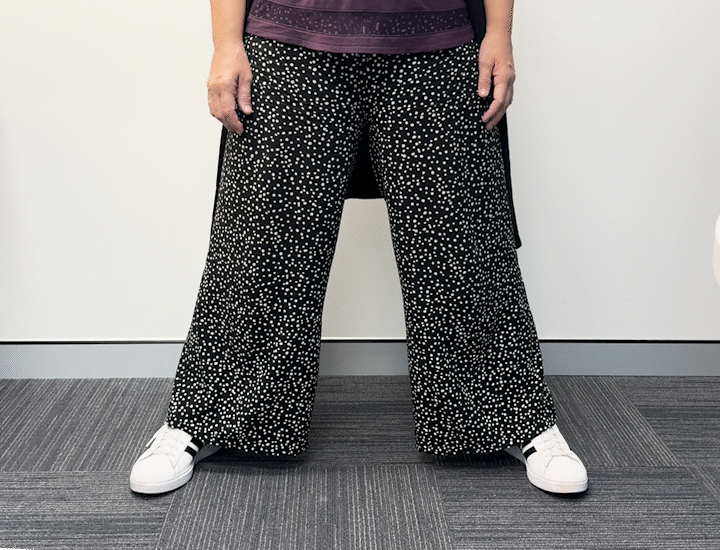
Time to sway like a sailor! Here's a way to engage your sense of balance and warm up the muscles in your legs.
Stand with your legs wide apart and slightly bent. Your arms may be at your sides. Or your hands could rest on your hips or against a chair or wall for support.
Slowly shift your weight from one foot to the other. Imagine you're on a ship that's swaying from side to side. Do this for 30 seconds or so.
Time to sway like a sailor! Here's a way to engage your sense of balance and warm up the muscles in your legs.
Stand with your legs wide apart and slightly bent. Your arms may be at your sides. Or your hands could rest on your hips or against a chair or wall for support.
Slowly shift your weight from one foot to the other. Imagine you're on a ship that's swaying from side to side. Do this for 30 seconds or so.
Read less...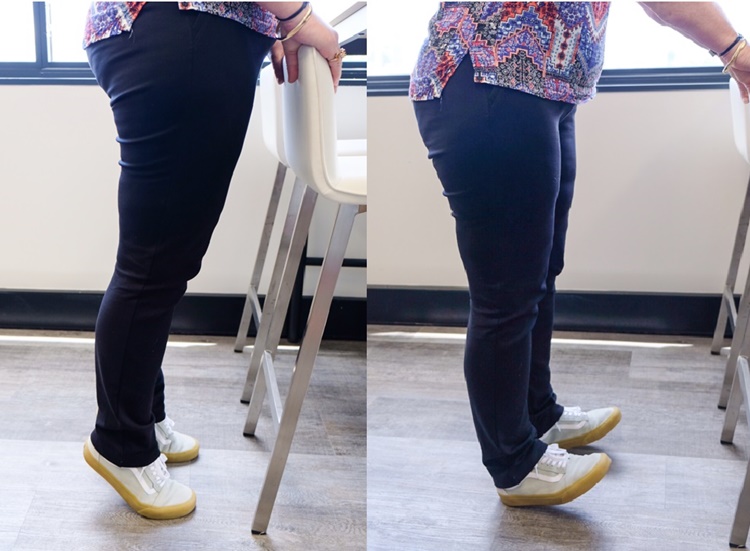
Building ankle strength is a key factor in falls prevention. You can follow this detailed exercise sheet here.
You can do heel and toe raises seated, or standing with your hands on your hips.
Or you may stand and brace both hands against a chair, wall, or walking frame.
Building ankle strength is a key factor in falls prevention. You can follow this detailed exercise sheet here.
You can do heel and toe raises seated, or standing with your hands on your hips.
Or you may stand and brace both hands against a chair, wall, or walking frame.
Read less...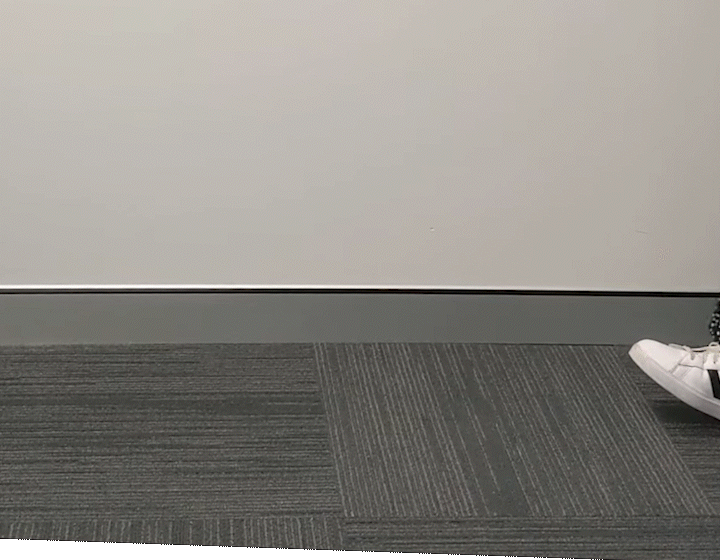
Ready to take the next step? You can try heel and toe walking.
Find a length of wall with no furniture or obstructions against it. Place your hand against the wall for support. Stand on your heels.
With your toes in the air, walk the length of the wall one way, and then back the other way. Do the same while walking on your toes with your heels raised. You can work up towards taking your hand off the wall as your ankles get stronger.
Ready to take the next step? You can try heel and toe walking.
Find a length of wall with no furniture or obstructions against it. Place your hand against the wall for support. Stand on your heels.
With your toes in the air, walk the length of the wall one way, and then back the other way. Do the same while walking on your toes with your heels raised. You can work up towards taking your hand off the wall as your ankles get stronger.
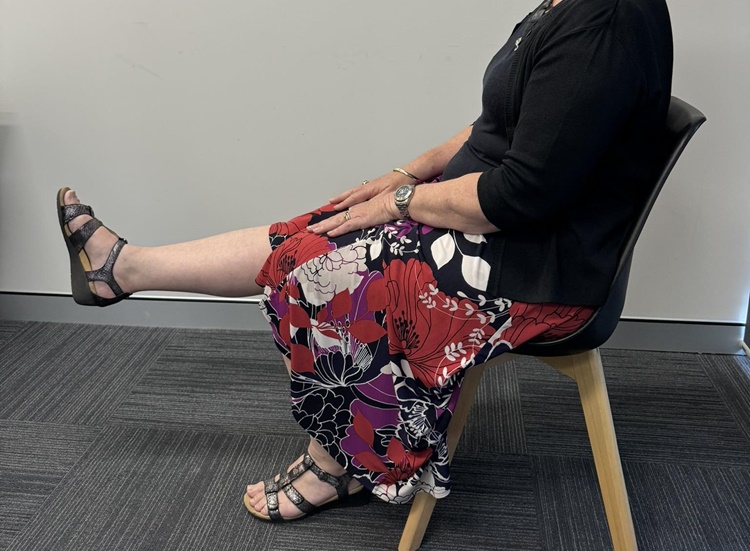
You can do these exercises with small weights strapped around your ankles for extra strength training.
You can do forwards knee extensions while seated, to strengthen the muscles in the front of your knee.
This is much like the seated leg raise in chair yoga.
You can do these exercises with small weights strapped around your ankles for extra strength training.
You can do forwards knee extensions while seated, to strengthen the muscles in the front of your knee.
This is much like the seated leg raise in chair yoga.
Read less...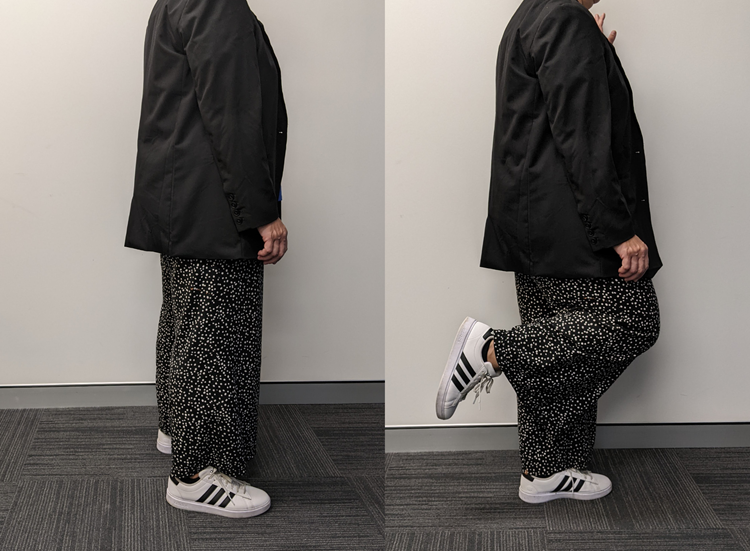
You can also stand while holding onto something stable for support and do backwards knee extensions.
You can do this by standing straight and lifting your foot behind you by bending your knee.
Hold your foot in the air for a few moments before lowering and repeating.
This will strengthen the muscles in the back of your knee.
You can also stand while holding onto something stable for support and do backwards knee extensions.
You can do this by standing straight and lifting your foot behind you by bending your knee.
Hold your foot in the air for a few moments before lowering and repeating.
This will strengthen the muscles in the back of your knee.
Read less...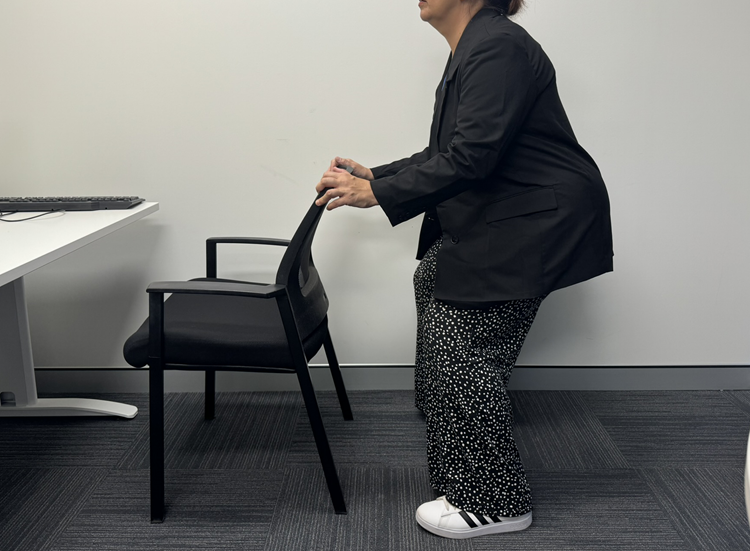
Begin with your hands on something stable in front of you for support. Have your feet shoulder-width apart. Bend your knees to partially squat down. Keep your knees above your toes. Squat as low as you can without feeling pain, until your heels begin to lift off the ground. Then stand back up. Repeat.
Eventually, you may like to do this exercise without holding onto a support. Instead, try it with your hands on your hips.
Begin with your hands on something stable in front of you for support. Have your feet shoulder-width apart. Bend your knees to partially squat down. Keep your knees above your toes. Squat as low as you can without feeling pain, until your heels begin to lift off the ground. Then stand back up. Repeat.
Eventually, you may like to do this exercise without holding onto a support. Instead, try it with your hands on your hips.
Read less...
For this exercise, have someone nearby for your safety. Also be sure to have something sturdy to hold onto for support if you feel unstable.
Back extensions improve mobility in your lower back and strengthen the muscles along your spine.
Stand with your feet shoulder-width apart and place your hands on the small of your back. Gently lean backwards, arching your back. Stay within a pain-free range. Hold for 10 seconds. Then slowly return to starting position. Repeat the exercise a few times.
For this exercise, have someone nearby for your safety. Also be sure to have something sturdy to hold onto for support if you feel unstable.
Back extensions improve mobility in your lower back and strengthen the muscles along your spine.
Stand with your feet shoulder-width apart and place your hands on the small of your back. Gently lean backwards, arching your back. Stay within a pain-free range. Hold for 10 seconds. Then slowly return to starting position. Repeat the exercise a few times.
Read less...
The sit-to-stand exercise strengthens your lower body, which helps your mobility and balance. Here is a detailed exercise sheet you can follow.
You can do this exercise with both hands, one hand, or no hands on your chair's armrests for support.
Have someone nearby for support if needed and stop the exercise if you experience pain in your knees.
The sit-to-stand exercise strengthens your lower body, which helps your mobility and balance. Here is a detailed exercise sheet you can follow.
You can do this exercise with both hands, one hand, or no hands on your chair's armrests for support.
Have someone nearby for support if needed and stop the exercise if you experience pain in your knees.
Read less...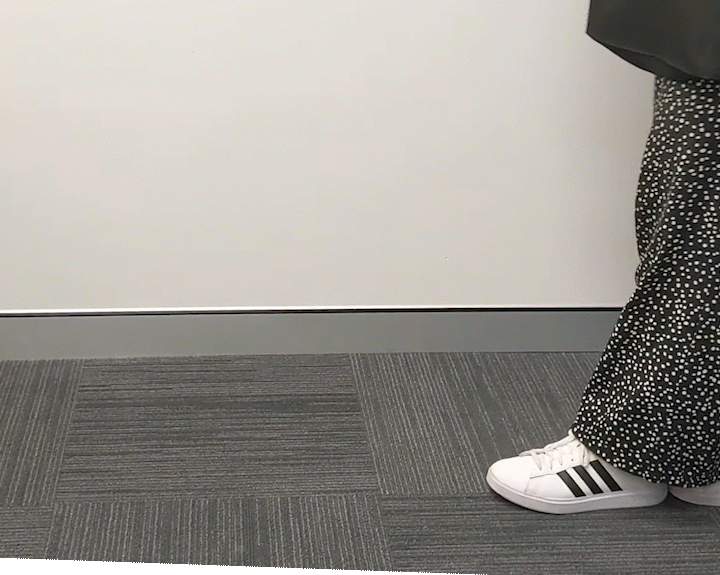
Heel-to-toe walking can help your balance, posture, and core strength. For this exercise, pretend like you're walking a tightrope.
Lift your arms out to your sides and begin with one hand against a wall for support. Put your right foot in front of your left, so heel is pressed against toe. Then bring your left foot in front of your right, again pressing heel to toe. Continue walking forward this way.
Heel-to-toe walking can help your balance, posture, and core strength. For this exercise, pretend like you're walking a tightrope.
Lift your arms out to your sides and begin with one hand against a wall for support. Put your right foot in front of your left, so heel is pressed against toe. Then bring your left foot in front of your right, again pressing heel to toe. Continue walking forward this way.
Read less...To test your coordination a bit more, fix your eyes ahead of you instead of on your feet. For further strength and balance training, lift your knees high with each step. Hold your foot in the air for a few seconds before lowering it.
You can also do this walk backwards.
Remove your hand from the wall only if you feel stable.
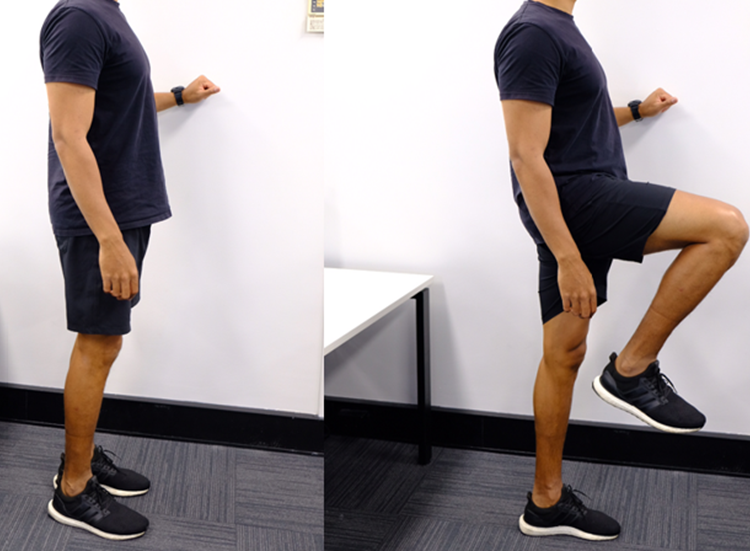
This exercise in stability will work the muscles in your lower limbs and core.
Begin with your hand on something stable for support before graduating onto no support. Try to stand on one leg for at least 30 seconds. Then do the same for the other leg. And try not to hold your breath while you concentrate on balancing.
You can stand on one leg by lifting your foot behind you, or by bringing your knee up in front of you. Bringing your knee up in front of you for this exercise would make it like a slower version of the hip march. This is one of the various exercises you can do for healthy hips.
This exercise in stability will work the muscles in your lower limbs and core.
Begin with your hand on something stable for support before graduating onto no support. Try to stand on one leg for at least 30 seconds. Then do the same for the other leg. And try not to hold your breath while you concentrate on balancing.
You can stand on one leg by lifting your foot behind you, or by bringing your knee up in front of you. Bringing your knee up in front of you for this exercise would make it like a slower version of the hip march. This is one of the various exercises you can do for healthy hips.
Read less...
Holding onto the handrail, go up and down the stairs carefully.
This activity works many different muscle groups at once.
Making stair climbing part of your regular routine can improve your cardiovascular health and endurance. So, over time, the number of steps you're able to climb increases.
Mastering the stairs also helps keep you active and moving around your house. This means you can stay independent for longer.
Holding onto the handrail, go up and down the stairs carefully.
This activity works many different muscle groups at once.
Making stair climbing part of your regular routine can improve your cardiovascular health and endurance. So, over time, the number of steps you're able to climb increases.
Mastering the stairs also helps keep you active and moving around your house. This means you can stay independent for longer.
Read less....tmb-large%20card.png?sfvrsn=dcf8253b_0)
Try to go for regular walks. Around the house or out and about. Increase the speed and duration of your walks as you feel able. Also remember to warm up and stretch before you go for a walk. Cool down and stretch after your walk, too.
Walking is a valuable tool for maintaining your independence and preventing falls. When you walk, you use muscles all over your body to move and control your balance. If you need a walking aid, use it! It will help you to keep walking as much as possible for as long as possible. Learn more about walking for healthy ageing here.
If you want to test your coordination, you can do some backwards walking, or try walking in a tight figure 8. Always have someone nearby when attempting a difficult manoeuvre.
Try to go for regular walks. Around the house or out and about. Increase the speed and duration of your walks as you feel able. Also remember to warm up and stretch before you go for a walk. Cool down and stretch after your walk, too.
Walking is a valuable tool for maintaining your independence and preventing falls. When you walk, you use muscles all over your body to move and control your balance. If you need a walking aid, use it! It will help you to keep walking as much as possible for as long as possible. Learn more about walking for healthy ageing here.
If you want to test your coordination, you can do some backwards walking, or try walking in a tight figure 8. Always have someone nearby when attempting a difficult manoeuvre.
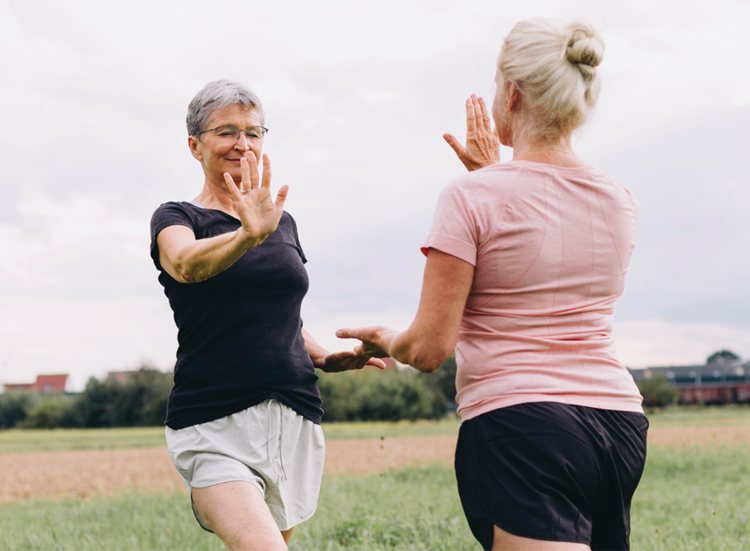
Tai Chi has been found to successfully decrease the rate of falls in older people.
It involves slow, careful, and flowing movements. These movements continuously shift your body's centre of gravity. It practices your posture control, trunk rotation, weight transfer and strength. All of which improve your balance.
Here are some Tai Chi poses to try out.
You can do Tai Chi poses anywhere, and for free!
Tai Chi has been found to successfully decrease the rate of falls in older people.
It involves slow, careful, and flowing movements. These movements continuously shift your body's centre of gravity. It practices your posture control, trunk rotation, weight transfer and strength. All of which improve your balance.
Here are some Tai Chi poses to try out.
You can do Tai Chi poses anywhere, and for free!
Read less....tmb-large%20card.png?sfvrsn=9dd94457_2)
Chair yoga is shown to improve agility and dynamic and static balance in older adults. As well as hand grip strength, limb muscle strength, and lower limb flexibility. All this helps to reduce fear and risk of falling and improve quality of life. The seated spinal twist is an example of a chair yoga pose that helps with falls prevention. Increased mobility in your spine will help you recover more easily from disturbances in your balance.
Learn more about the benefits of chair yoga for older people here. It's another low-cost, low-impact, but very high-reward activity. You can also follow this exercise sheet of 10 chair yoga poses to try at home. And you might want to check out these other exercises that can be done from the comfort of your own chair.
Chair yoga is shown to improve agility and dynamic and static balance in older adults. As well as hand grip strength, limb muscle strength, and lower limb flexibility. All this helps to reduce fear and risk of falling and improve quality of life. The seated spinal twist is an example of a chair yoga pose that helps with falls prevention. Increased mobility in your spine will help you recover more easily from disturbances in your balance.
Learn more about the benefits of chair yoga for older people here. It's another low-cost, low-impact, but very high-reward activity. You can also follow this exercise sheet of 10 chair yoga poses to try at home. And you might want to check out these other exercises that can be done from the comfort of your own chair.
.tmb-large%20card.png?sfvrsn=75858266_2)
It's convenient to follow exercise sheets and instructional videos online from home. But you might benefit more from finding local groups to exercise with.
Joining a chair yoga class, Tai Chi group, or walking squad is a great way to stay active. And it keeps you connected with your community. This is important to your mental health and helps you age well.
It's convenient to follow exercise sheets and instructional videos online from home. But you might benefit more from finding local groups to exercise with.
Joining a chair yoga class, Tai Chi group, or walking squad is a great way to stay active. And it keeps you connected with your community. This is important to your mental health and helps you age well.
Read less...You don't have to start with a difficult sport or training regimen. It can be simple activities that get you moving. Getting dressed in the morning, for example, is one task that incidentally exercises your balance. If you experience pain or difficulty while getting dressed, dressing aids might help you keep doing this task for yourself daily. This means you can keep moving your body every day, which may help to reduce pain and increase your physical ability.
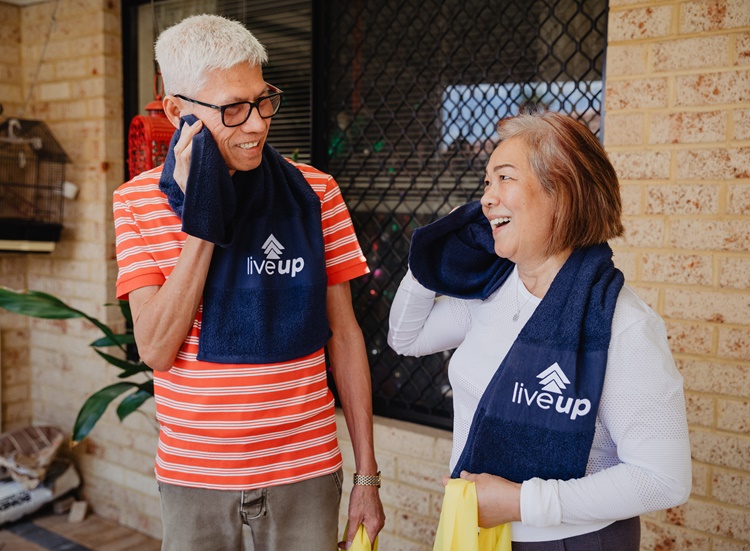
Studies show it’s possible to enhance your balance control and stability at any age. You can do this by regularly performing a few balance exercises.
Combining balance and coordination exercises is also shown to improve quality of life. A 2019 literature review recommends a regimen that does this for 2-3 sessions per week, for at least 8 weeks.
When planning your routine, try to include aerobic exercises too. As well as activities that strengthen your back, hip, and leg muscles. Not only will you be less likely to experience a fall, you'll also be less likely to get seriously injured if you do fall.
Studies show it’s possible to enhance your balance control and stability at any age. You can do this by regularly performing a few balance exercises.
Combining balance and coordination exercises is also shown to improve quality of life. A 2019 literature review recommends a regimen that does this for 2-3 sessions per week, for at least 8 weeks.
When planning your routine, try to include aerobic exercises too. As well as activities that strengthen your back, hip, and leg muscles. Not only will you be less likely to experience a fall, you'll also be less likely to get seriously injured if you do fall.
Read less...
Consider following a safe, multicomponent routine that becomes more challenging over time.
The exercises listed above are curated from science-backed programs, such as the Otago Exercise Program. It's proven to help prevent falls in older people. It enhances lower limb muscle strength and dynamic and static balance ability. It also improves gait stability and posture control.
Another example of a proven balance training program involved performing exercises while sitting, standing, and walking. These were done at increasing levels of difficulty and complexity. The result was reduced fear of falling and increased walking speed in older people. It also improved self-efficacy and physical function.
Consider following a safe, multicomponent routine that becomes more challenging over time.
The exercises listed above are curated from science-backed programs, such as the Otago Exercise Program. It's proven to help prevent falls in older people. It enhances lower limb muscle strength and dynamic and static balance ability. It also improves gait stability and posture control.
Another example of a proven balance training program involved performing exercises while sitting, standing, and walking. These were done at increasing levels of difficulty and complexity. The result was reduced fear of falling and increased walking speed in older people. It also improved self-efficacy and physical function.
Read less...
A 2019 study on physical activity and balance found balance to be multifactorial. It can be improved with many different exercises. Older adults in no-intervention control groups, however, declined in balance performance. So, however you do it, the important thing is to keep active as you age.
Here are some guidelines for how much physical activity to aim for:
A 2019 study on physical activity and balance found balance to be multifactorial. It can be improved with many different exercises. Older adults in no-intervention control groups, however, declined in balance performance. So, however you do it, the important thing is to keep active as you age.
Here are some guidelines for how much physical activity to aim for:
.tmb-large%20card.png?sfvrsn=e66329ad_2)
If you would like to find local exercise classes, social activities, and helpful tips, try the LiveUp quiz.
You can browse LiveUp for more information about:
If you would like to find local exercise classes, social activities, and helpful tips, try the LiveUp quiz.
You can browse LiveUp for more information about:
Dunsky, A. (2019). The effect of balance and coordination exercises on quality of life in older adults: A mini-review. Frontiers in Aging Neuroscience, 11, Article 318. https://doi.org/10.3389/fnagi.2019.00318
Hafström, A., Malmström, E. M., Terdèn, J., Fransson, P. A., & Magnusson, M. (2016). Improved balance confidence and stability for elderly after 6 weeks of a multimodal self-administered balance-enhancing exercise program: A randomized single arm crossover study. Gerontology and Geriatric Medicine, 2, 2333721416644149. https://doi.org/10.1177/2333721416644149
Halvarsson, A., Dohrn, I. M., & Ståhle, A. (2015). Taking balance training for older adults one step further: The rationale for and a description of a proven balance training programme. Clinical Rehabilitation, 29(5), 417-425. https://doi.org/10.1177/0269215514546770
Thomas, E., Battaglia, G., Patti, A., Brusa, J., Leonardi, V., Palma, A., & Bellafiore, M. (2019). Physical activity programs for balance and fall prevention in elderly: A systematic review. Medicine (Baltimore), 98(27), e16218. https://doi.org/10.1097/MD.0000000000016218
Yao, C. T., Lee, B. O., Hong, H., & Su, Y. C. (2023). Effect of chair yoga therapy on functional fitness and daily life activities among older female adults with knee osteoarthritis in Taiwan: A quasi-experimental study. Healthcare (Basel), 11(7), Article 1024. https://doi.org/10.3390/healthcare11071024
Take our easy OpenUp quiz to get personalised advice and see suggested products, services and support in your local area or online.
Let's go!